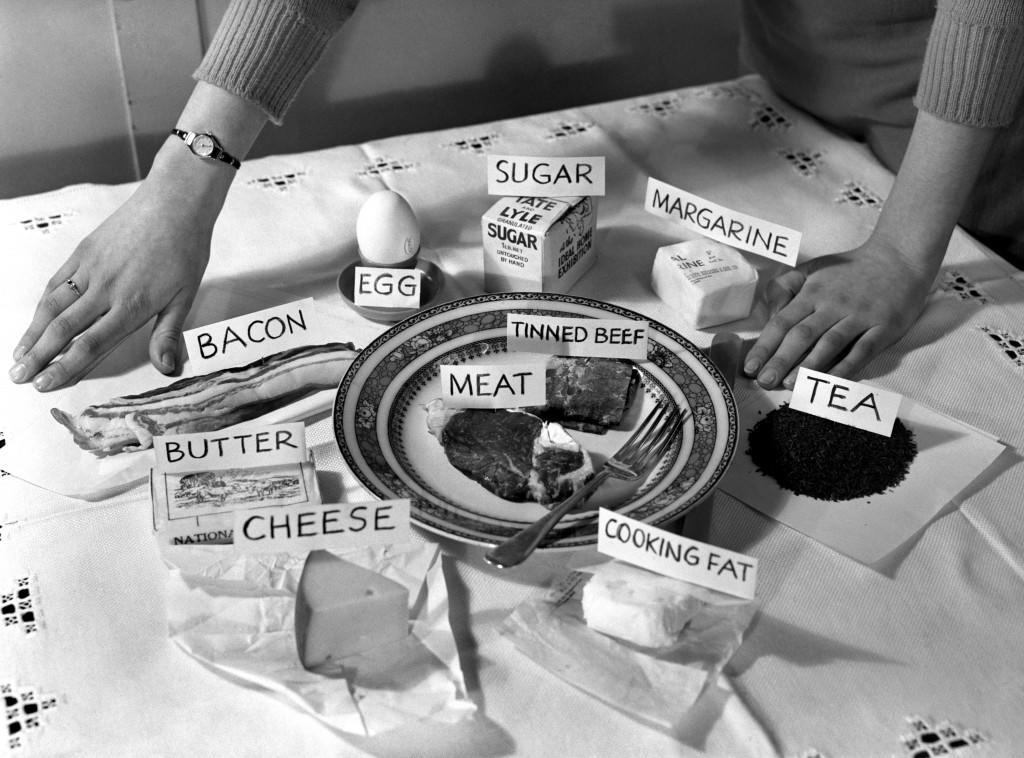When Gallup, in 1947, asked the British public what would be their no-expense-spared fantasy meal it came back as:
Sherry, tomato soup, sole, roast chicken with roast potatoes, peas and sprouts, trifle and cream, cheese and biscuits and coffee.
It was a large meal and a lot of food but that’s not particularly surprising after all the deprivation and food shortages in Britain during and after the war. To our tastes today the menu may seem a little unimaginative and humdrum. Two years after the war, however, a meal like that, for most people, was only remotely possible in some kind of extreme fantasy world. Food in the immediate post-war years was often more strictly controlled than during the actual war. For instance bread was only rationed for the first time during the years of 1946-48 and potatoes briefly during 1947. Tea was still rationed until 1952 and then the following year sugar and eggs became freely available as did, finally, cheese and meats in 1954.
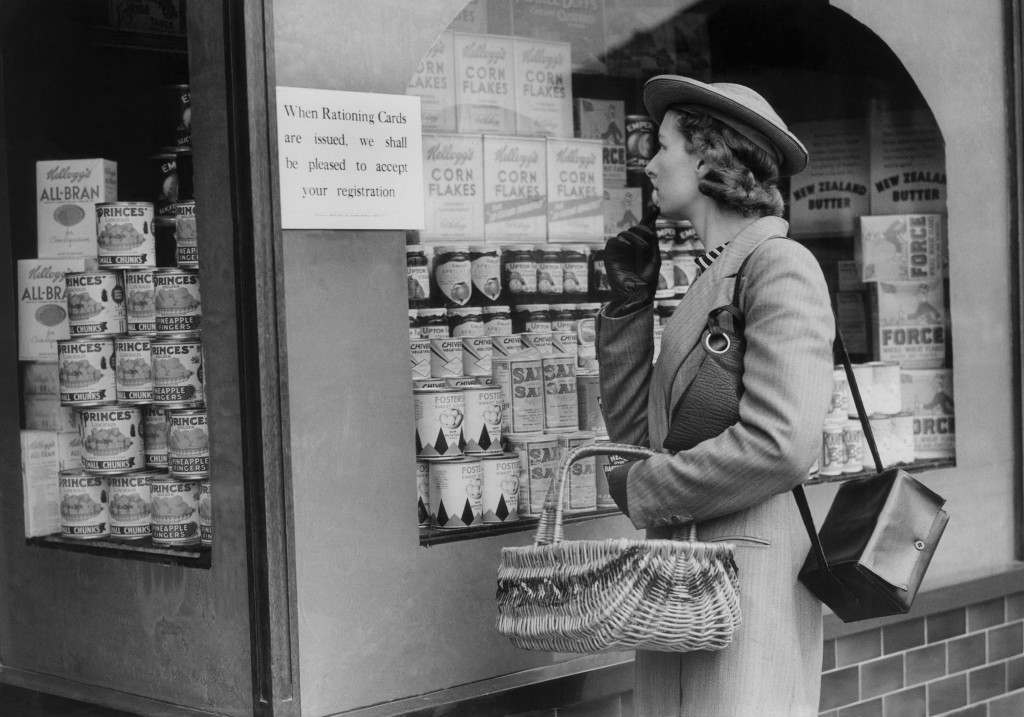
The original caption for this photo from 1939: “It is not certain that rationing is to be brought for some foodstuffs. If it is, rationing is a preventative of shortage; not evidence of it. Each person will register with his grocer, Baker, Butcher and other controlled suppliers. Food prices already are controlled, though there is not rationing And each shop displays its request that its customers and any others who like will register there so that the business may be retained in England on Oct. 2, 1939. And even when shopping in the next street, Mrs. Englishman must carry her gas mask. It is a moral but not a legal necessity, preventing inconvenience to others should a raid occur.” (AP Photo)
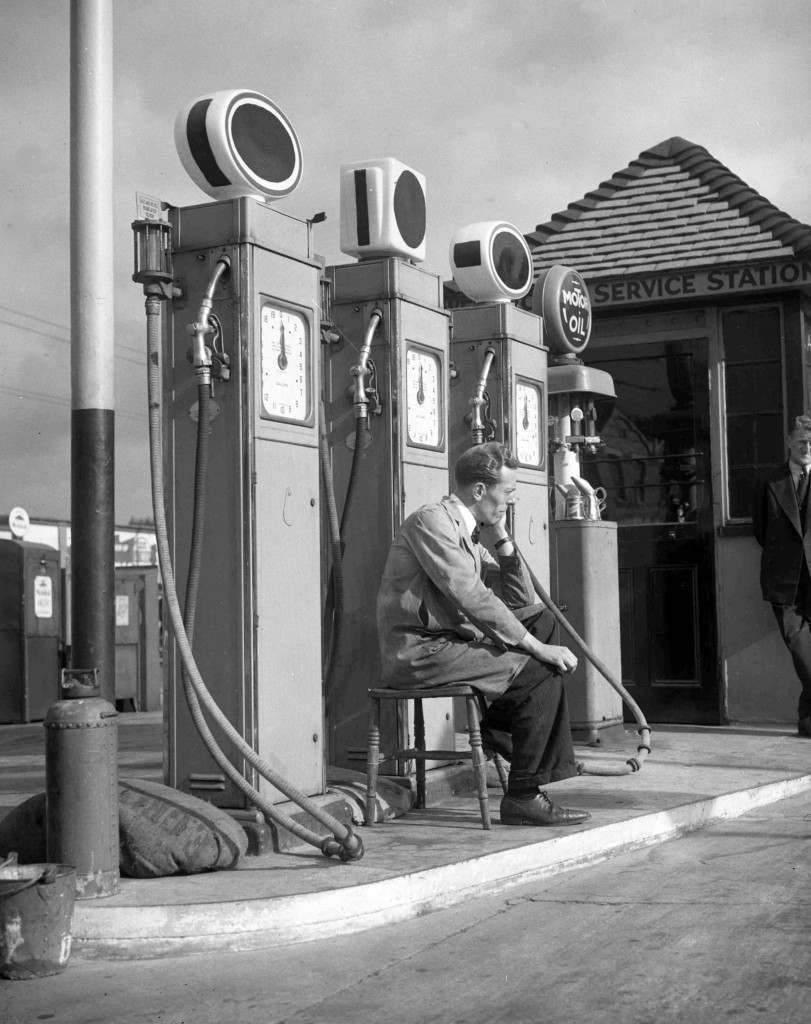
A garage attendant waits for customers at a garage somewhere in London on Sept. 24, 1939, after petrol rationing was enforced. (AP Photo/Staff/Beadel)

Original AP caption: “Under the clothes rationing plan which has been started in Great Britain with a view to equalizing distribution, each person is allowed 66 coupons yearly with each item of apparel listed in terms of a certain number of coupons. What a business girl may choose, for example, is displayed June 24, 1941. Besides the clothes she wears, she may buy the following additional articles with 66 coupons: one coat (over 28 inches), 14 coupons; one day dress (not woolen), 7 coupons; one skirt, 7 coupons; one blouse, 5 coupons; one pair of Pajamas, 8 coupons; one pair of Cami Knickers, 3 coupons; one pair of shoes, 5 coupons; two handkerchiefs, one coupon; four pair of stockings, 8 coupons.” (AP Photo)
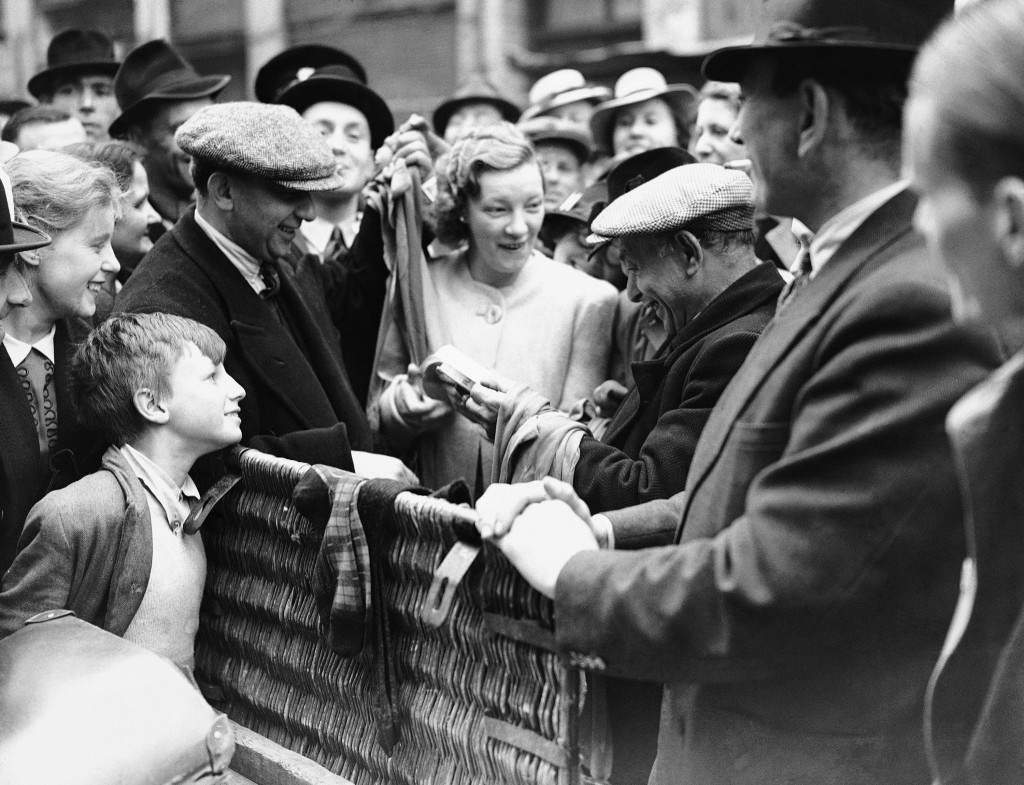
A woman makes a purchase of silk stockings at a stall in London’s famous petticoat lane on June 1, 1941 and in accordance with the new clothes rationing order announced today, hands over her coupons as she makes the purchase. (AP Photo)
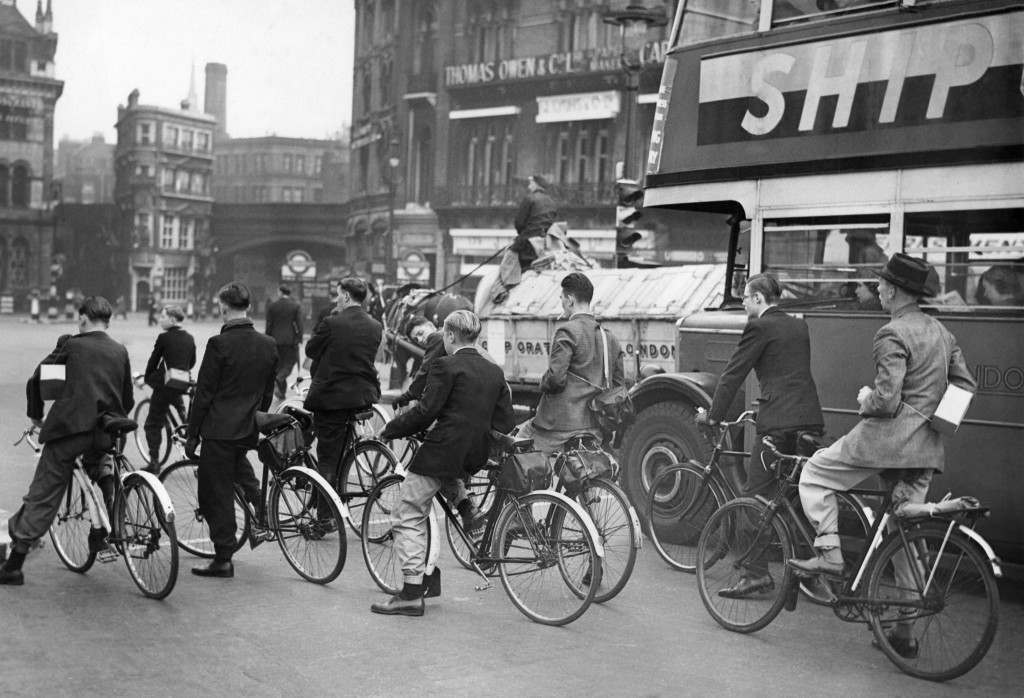
Bicycles, a bus and a horse drawn vehicle, typical cross section of the great trek to work, Sept. 25, 1939, on the first week of petrol rationing. No private cars and restricted bus services bring out the bikes. (AP Photo)
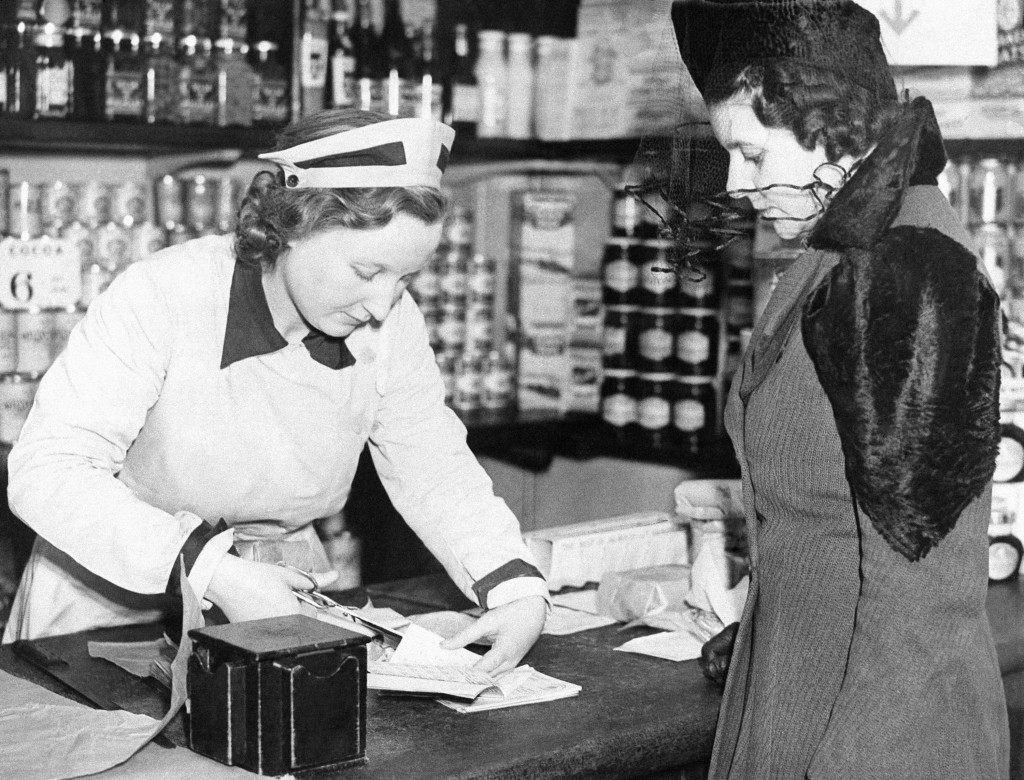
A shop assistant cuts a coupon from a London womans ration book Dec. 14, 1940. Most food in the British capital may be bought without a ration book if the customer has the price. But butter, sugar, bacon and ham may be bought only at a shop where the customer is registered. (AP Photo)

Two Canadian nurses buy stockings in a London store November 1. Because theyre serving in the war they dont have to worry about clothing coupons, since rationing doesnt apply to anyone serving with the armed forces. But theyre glad to buy stocking when they can, because stocks are limited. November 1, 1941 AP Photo)

A London shopper studying of coupon chart in a west end store November 1. 1942. Careful buying is needed to get the best value for your money in rationed clothing. (AP Photo)
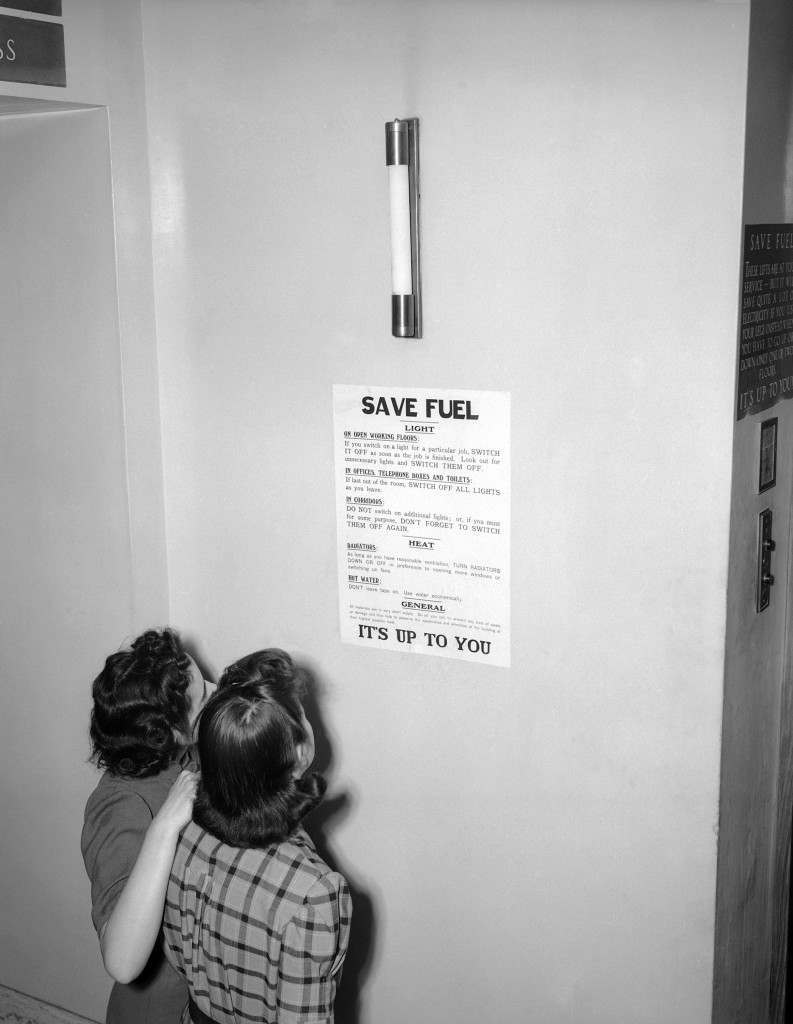
Responding to a country-wide campaign urging Britons to out consumption of coal, gas and electricity to provide more fuel and power for the fighting forces and war factories, voluntary rationing of lights, fires and baths already have produced sizeable savings, according to the British government. Official rationing has been opposed on the grounds that it would take a vast army to civil servants to make it work, thus the government is continuing its intensive propaganda drive through press, radio and outdoor advertising to get the Britons to ration themselves. Two London office girl workers read the fuel economy notice displayed on every floor of the building where they work and posted, appropriately, beneath a corridor light which has been switched off for the duration in London, Jan. 4, 1943. The drive applies to all homes, factories, office buildings, business places and hotels. (AP Photo)
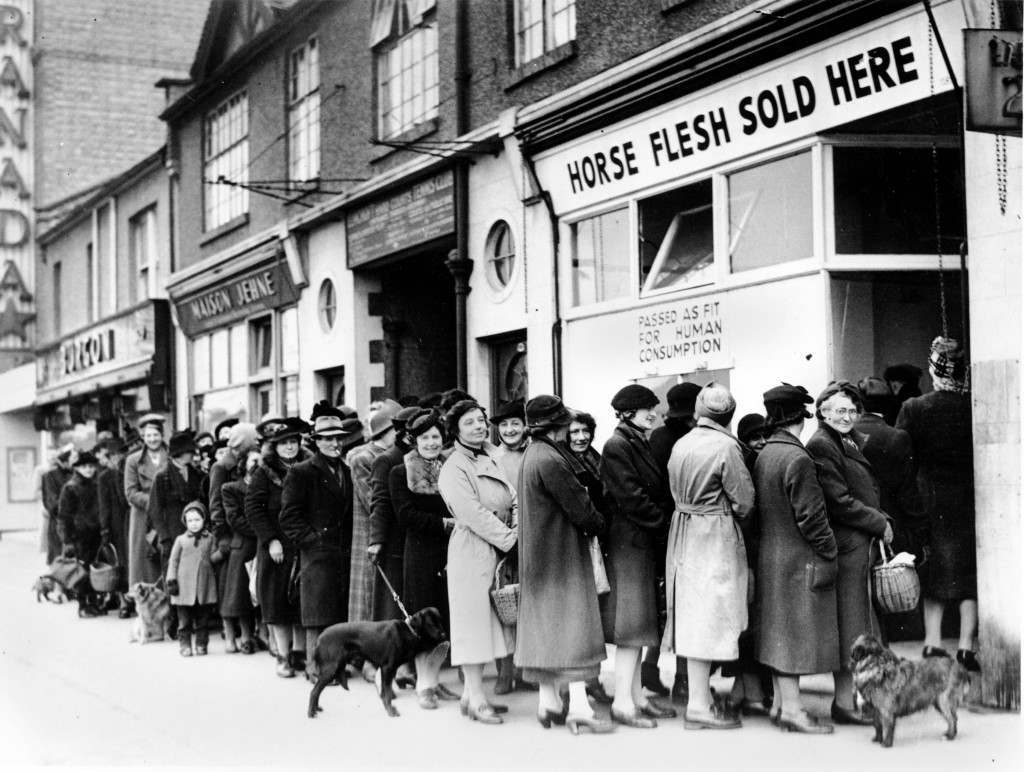
Women line up outside a butcher shop to buy meat in North Cheam, Surrey, England, on April 17, 1942 during World War II. (AP Photo)
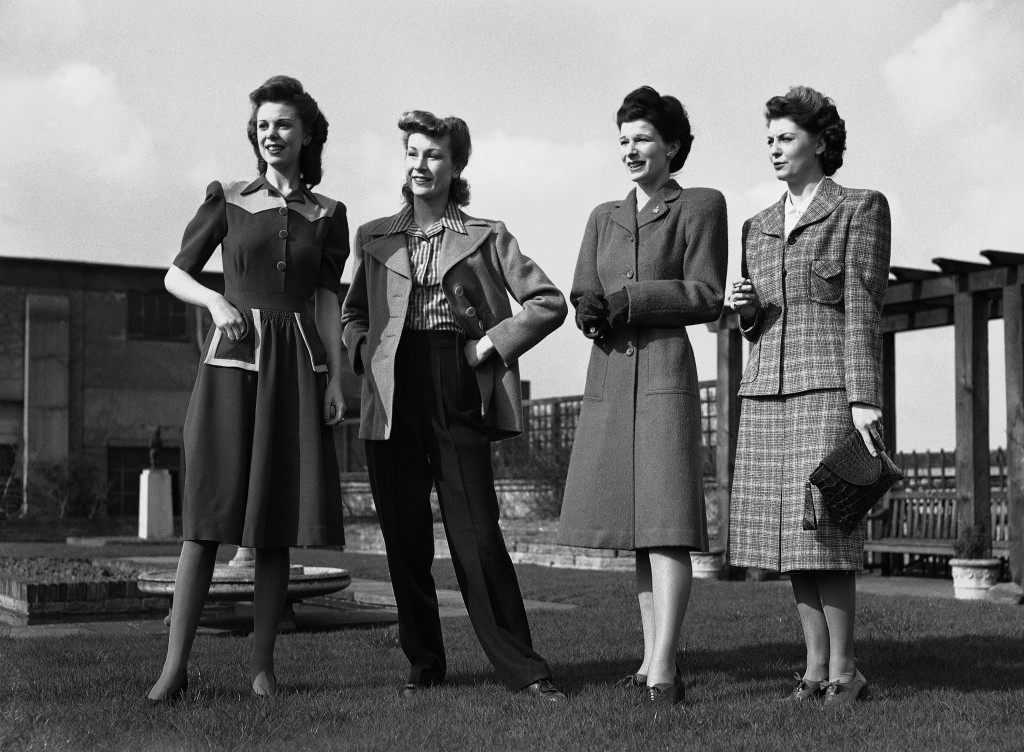
At a famous west end store, Norman Hartnell, Britain’s leading dress designer, sponsored a show of the new utility fashions for the coming season on March 9, 1943. These models, said Mr. Hartnell, are designed not only for the home market but also to uphold Britain’s fashion prestige abroad. From Left to right are: a 2-tone blue frock by Frances Leopold with unusual model pockets; navy blue Jaeger slacks with camel-coloured duffle coat and a wool-taffeta check blouse, a moss green coat with full yoke and inset belt with balanced pockets. (AP Photo)
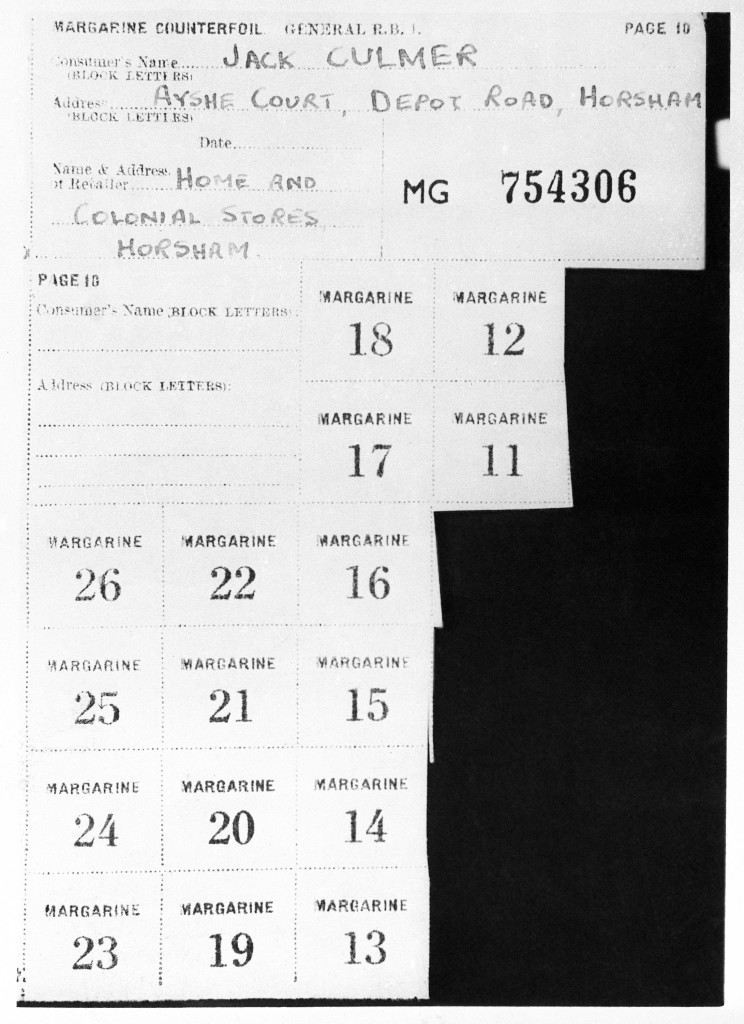
Food rationing coupons served for clothing coupons too for the first few months after Britain inaugurated rationing of clothing June 1, 1941. This is the margarine page from a food book. When all the coupons have been used, a clothes rationing card may be obtained from any British post office by producing the empty food coupon book shown in London Jan. 29, 1942. Clothes rationing was started without any previous warning in order to prevent hoarding of clothing stocks. (AP Photo)

While well designed loop-holes in the British rationing system ease the feeling of desperation that comes when ration tickets are about to be exhausted; while there is no lack of bread, some butter, an occasional egg and chances to eat your fill acute shortage of fruit. What is available costs a Kings ransom. Small peaches cost a dollar each (5/) as this fruit vendor demonstrates in London August 25, 1944. (AP Photo)

Queues of people wait in Fleet Street during a cigarette shortage. Cigarettes were never rationed in Britain.
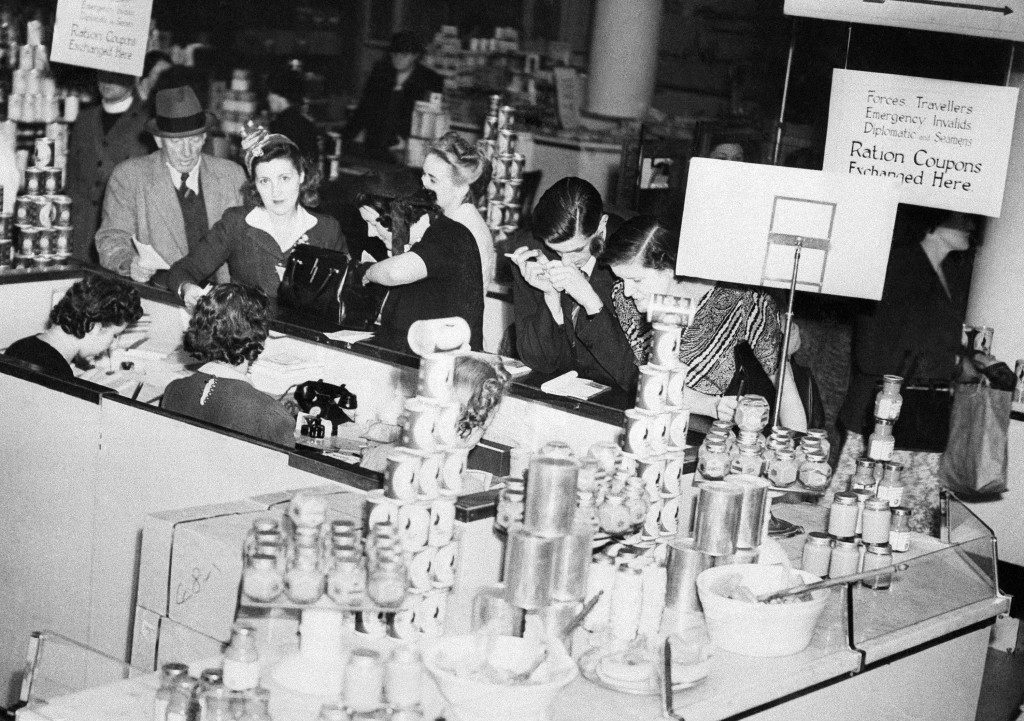
Shoppers in a big London store line up a special ration advisory bureau while they get advice and assistance in food coupon problems Nov. 1, 1945. Catering is a bigger worry than bombs in London. (AP Photo)

BANANAS FOR SALE 1946: A scene from Bethnal Green, East London, showing smiling women queueing for the much awaited bananas which have been scarce since the beginning of the Second World War. Beetroot is also available on this roadside stall.
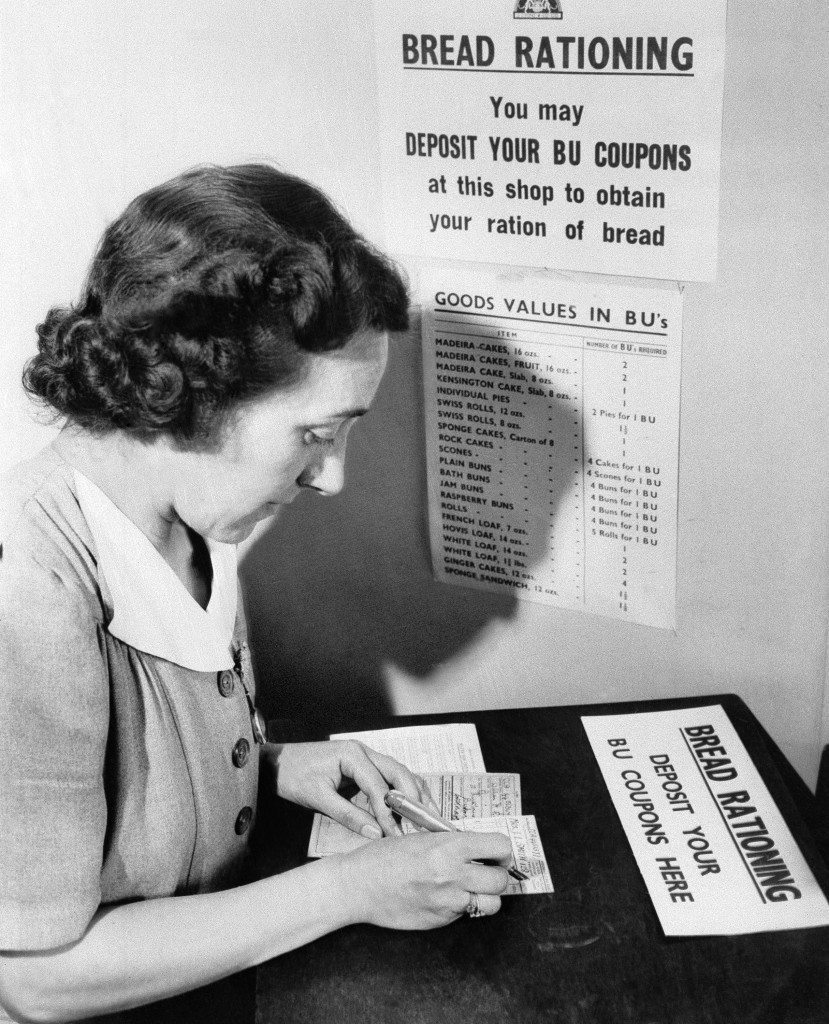
A London, England housewife fills out her bread unit card in a London shop on the eve of bread rationing in England July 23, 1946. Each family has a record card of day-to-day consumption of Bread Units. (AP Photo)
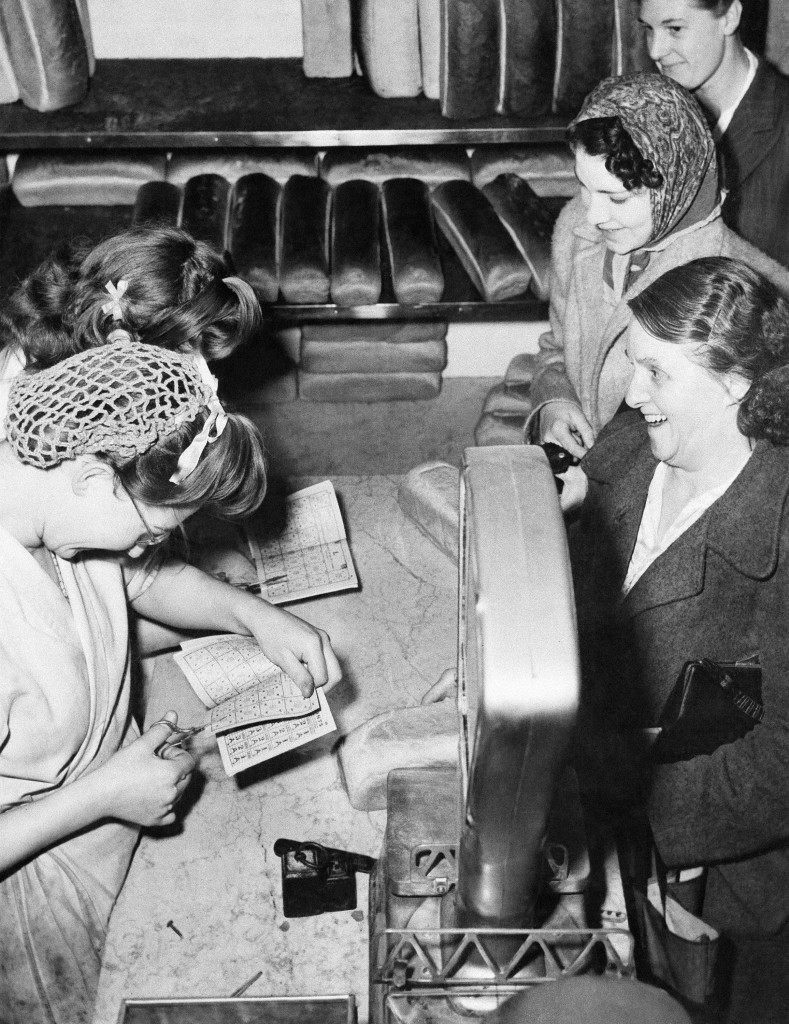
Clerks (left), in a London, England bakery shop, cut out bread ration coupons before serving customers on July 22, 1946. Bread rationing for Britain became effective July 21. (AP Photo)
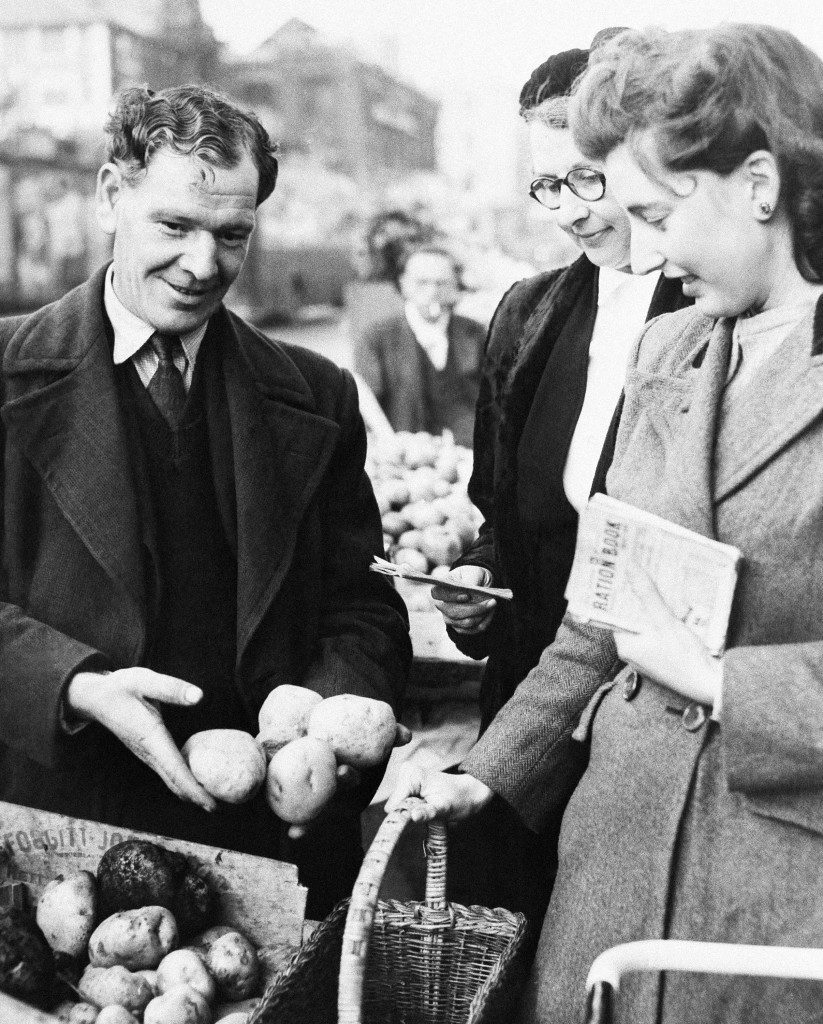
Her weekly ration of potatoes, consisting of legal three-pound allotment, is handed to Mrs. Anne Allen of Kilburn, North London by a street vendor Nov. 10, 1947. Her particular ration in this sale consisted of four large and one small potatoes. Potato rationing in Britain started on November 10, each person allowed three pounds per week. (AP Photo)
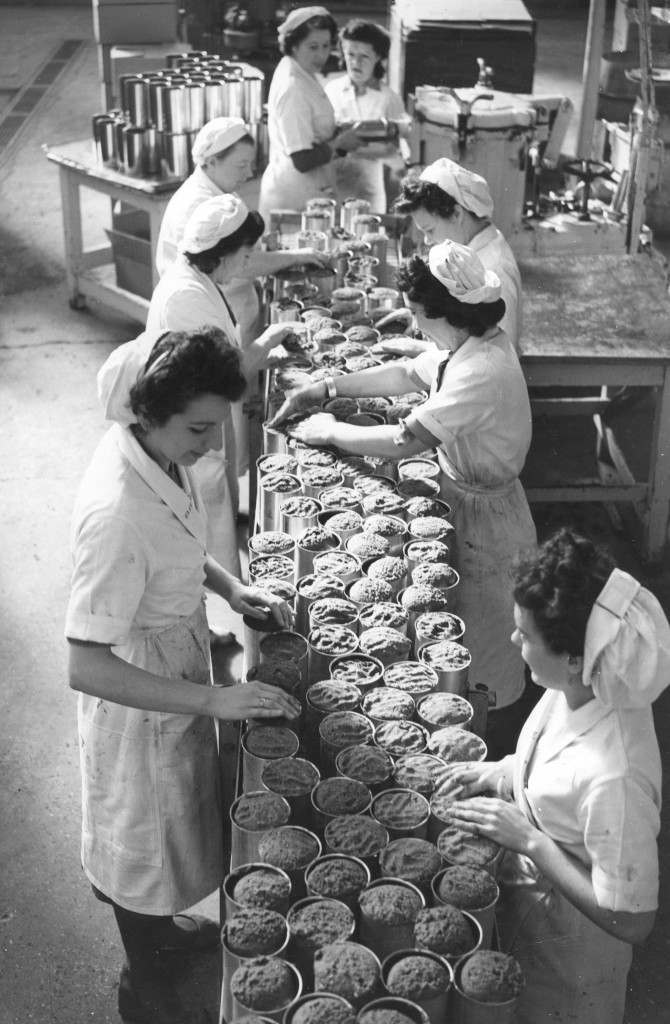
Workers rolling out the whalemeat roll from a conveyor belt at a Slough factory. Whalemeat will soon make its bow to the public and it will be unrationed and off points. It can be served as a luncheon meat, warmed in frying pan as a breakfast food or served cold with salad: 1949.
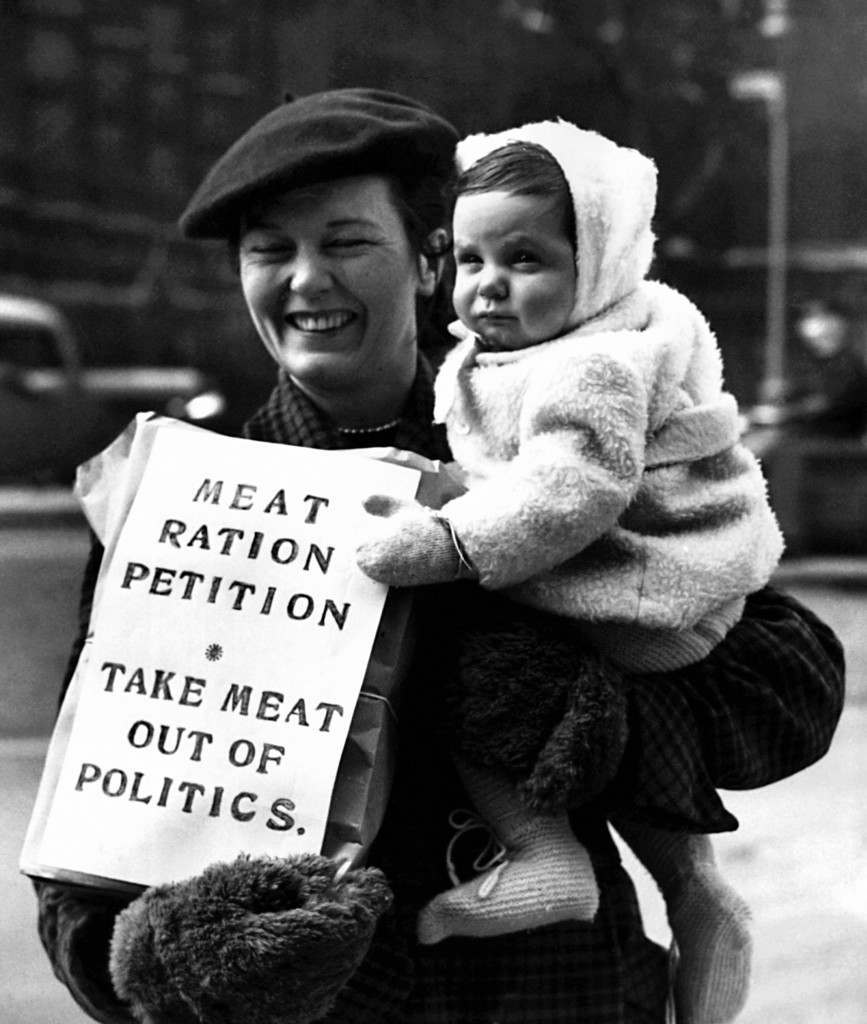
RATIONING 1951: Mary Clare, the actress, headed housewives who brought a petition – signed by 166,000 – to the House of Commons, London. The petition has been organised by the National Federation of Housewives’ Associations as part of their campaign to ‘Take Meat out of Politics’. Mary is pictured with her daughter, Sally.
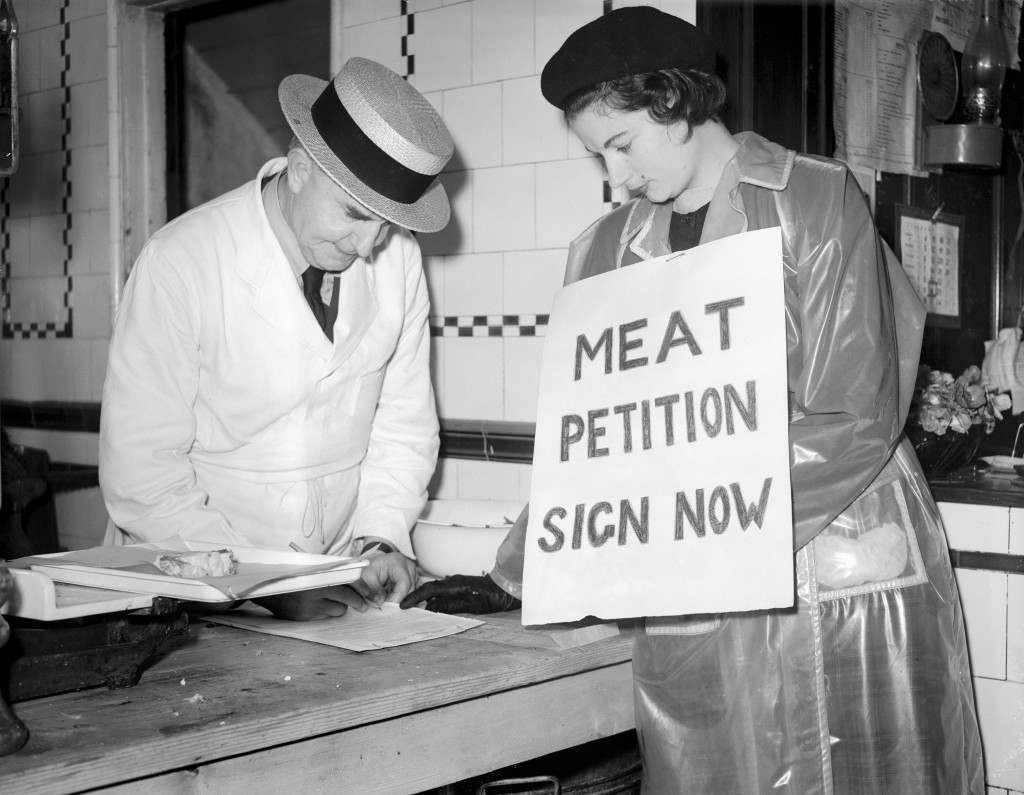
Butcher Charles Wesson signs a petition urging the return of the nation’s meat buying to private traders for Brenda Borrett, representing the National Federation of Housewives Associations 16/02/1951 (AP Photo)
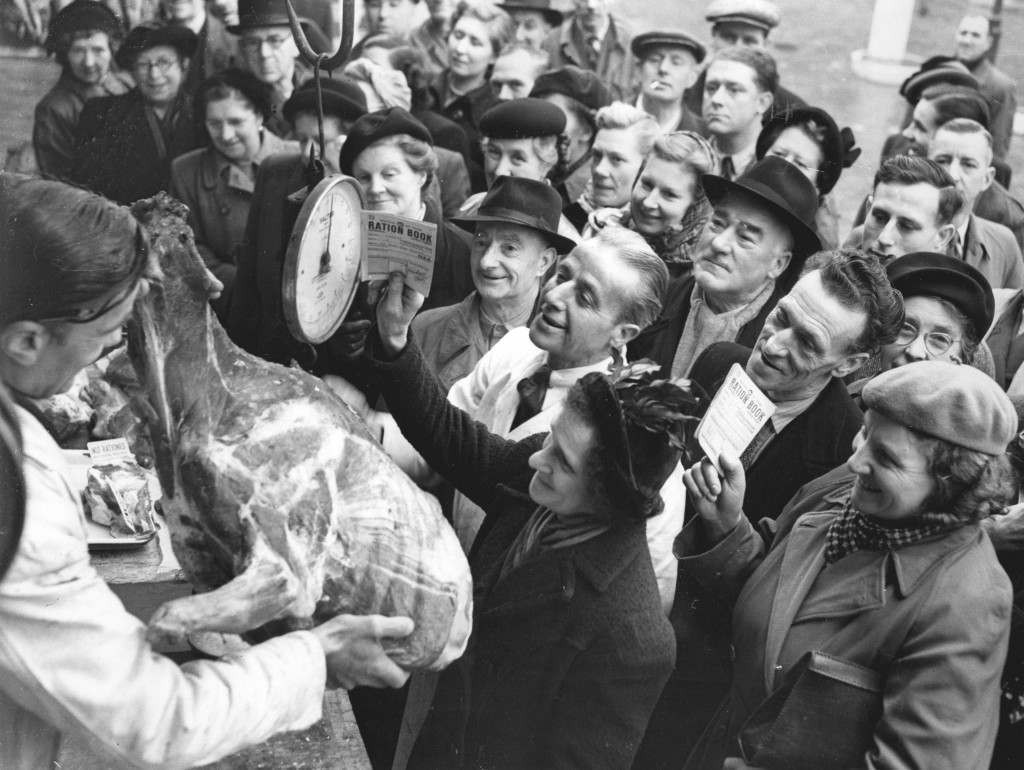
The only thing wrong with this picture taken at Smithfield Market (London) is the ration book held by a woman in the centre. For the meat drawing a huge crowd is reindeer meat – unrationed. 1951

A woman studies meat in a butcher’s shop at Smithfield Market, as rationing comes to an end. 7/7/1954
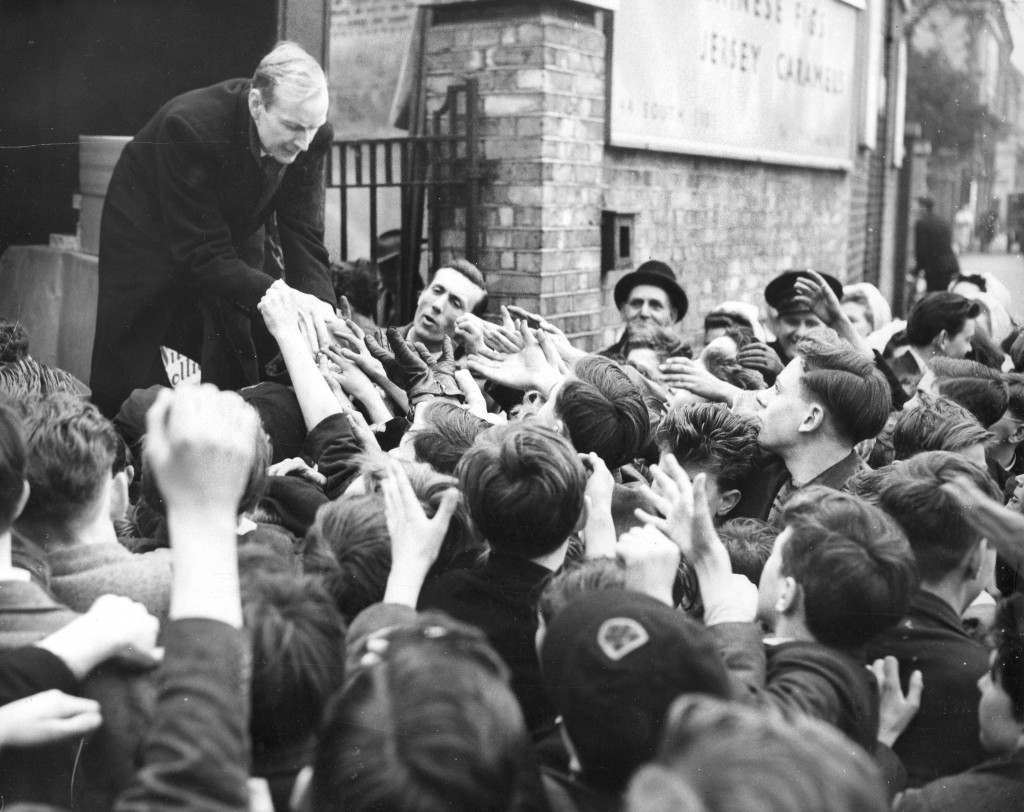
Eager hands of London children stretch out for sweets which were not only off the ration but were being distributed for free. The hand-out was at the front gates of Batger’s, the confectioner manufacturers, at Clapham Common, London, when the firm gave away sweets to celebrate derationing. Rationing of sweets, introduced almost 11 years, ended at midnight.
Would you like to support Flashbak?
Please consider making a donation to our site. We don't want to rely on ads to bring you the best of visual culture. You can also support us by signing up to our Mailing List. And you can also follow us on Facebook, Instagram and Twitter. For great art and culture delivered to your door, visit our shop.
